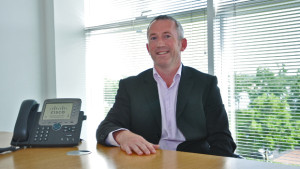Two of the largest SD storage solutions delivered by Dell in Ireland recently are in the public sector and based on the OpenStack platform using open source software defined storage. “So it’s real, it’s here in the market in Ireland. It has a place in any client’s ICT strategy and really there is no door closed.”
Cisco is still most famous as the leading network systems vendor but in recent years it has been transforming itself into a software vendor that can provide the vital associated hardware. “The ‘why?’ of software defined technology is about greater business agility—essentially from reduced complexity and greater efficiency—and reduced costs,” says Tom Long, head of technical strategy in Cisco Ireland. “We have an internal policy of ‘Cisco on Cisco’ and our IT people have confirmed that we will achieve a 41% reduction in both CapEx and OpEx in our next generation of data centres.

The ‘why?’ of software defined technology is about greater business agility — essentially from reduced complexity and greater efficiency — and reduced costs, Tom Long, Cisco
Programmability
“So that’s the ‘why?’ The ‘how?’ is a bit more difficult but in essence it’s about bringing programmability into the data centre and all of its constituents — compute, storage, network and network and the Layer 4-7 services. The hot topic of the moment in software defined infrastructure is the network and SDN. The challenge here is that to be programmable that has to be designed and built in from the beginning. But in networking, there are really very few green field opportunities. In real life networks grow organically and the components will be from different stages.”
Cisco approaches this with its Application Centric Infrastructure (ACI). “Humans will still design the policies but the software controllers will implement them,” Long says. “Applications are the purpose, that is where the business objectives are, and the network is—or should be—just an enabler. To do that most efficiently it has to be dynamic. We talk internally about ‘elephant flows and mice flows’. With our ACI there is a controller and the fabric, with open interfaces and next generation switches. The point is that the network will intelligently respond to the traffic flows and critical applications according to the set policies. In fact because the network is application-aware you can now provide visibility, monitoring, SLAs and reporting for specific applications.”
Business acceptance
There is, however, still something of a gap between the future visions of the technologists and the real business world. That is the cautionary word
from Aidan Rowsome, head of cloud practice in Unity Technology Solutions. “The business community has accepted the concept of compute virtualisation — but only just and not fully. The technology is accepted as mature by ICT people but statistically the adoption of virtualised workloads is definitely not where it might have been expected to be by now. The consumer love affair with new tech does not mean that the FUD factor has gone away in the corporate world. Putting business critical applications into a virtual world requires a great deal of reassurance. Who is actually giving guarantees that everything will work? Until recently, even the enterprise software giants were reluctant to do that.”
There is still a big communications challenge, Aidan Rowsome believes. “We are coming up with new ideas like hyper-convergence but trying to talk to an audience that has just got around to accepting the basics of separating the logic from the hardware. On the other hand, Nutanix for example is conceptually a complete ‘box’ with bells and whistles that will do what it promises. That’s the kind of concept that can be sold to the CEO or CFO in business efficiency terms. I think we have to be able to put together the technical advances into comprehensive packages that will make business sense.

SD is not a hard concept to grasp. But the business questions are the same. We have broadly got there with virtualisation and cloud computing but we still have to reassure and then sell, Aidan Rowsome, Unity
“Software defined is not a hard concept to grasp. But the business questions are the same as before: What will it contribute? Do better? Save in time or resources or costs? We have broadly got there with virtualisation and cloud computing but we still have to reassure and then sell,” Rowsome says.
“Hyper-convergence, oddly enough, is the kind of ultimate concept that may get us there. It’s a virtual data centre in a box, or something like that, with hot swappable components and workloads and applications that can be readily changed as the world and your business change. That is the kind of package or message about our new software-defined ICT that senior management will buy.”







Subscribers 0
Fans 0
Followers 0
Followers